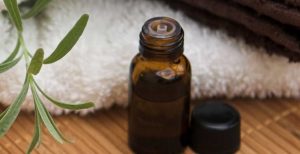You may have heard of or seen people talking about the Blotter Test which is supposed to be able to tell you if your essential oil has been adulterated in any way.
If this Fact? Or is it Fiction?
This does have basis in fact. Although like many facts it has been somewhat distorted as it has been shared online. Like a game of Chinese whispers, the original meaning has been somewhat distorted.
Let’s look into this further…..
I was introduced to the blotter test many years ago during my very earliest days of studying aromatherapy.
Back then this test was not intended to be a blanket test for adulteration of an essential oil. It was merely intended to help you determine if an essential oil had any carrier oil added.
Unfortunately some have taken this test to mean it will detect ANY adulteration of an essential oil. And conversely, the fact that the test is not that comprehensive has led others to dismiss it as having no useful purpose at all.
To understand the test, you first need to understand the difference between an essential oil and a carrier oil.
Essential oils are volatile oils. That is, they evaporate readily. This volatility is in fact the reason we can smell essential oils. The molecules easily disperse into the air, where we can breathe them in so our brain registers their unique qualities. (The mechanics of our sense of smell, or olfaction, will be the subject of a future blog post).
On the contrary, Carrier Oils are fatty or “fixed” oils. They do not evaporate easily. You will notice this if you drop or splash oil onto your clothing when cooking – the resulting oil stains can be very hard to remove!
The blotter test works like this –
Drop a little of the oil in question onto blotting paper. (You could also use paper towel or any other such absorbent paper.)
Leave for a period of time (usually a few hours.) If there is an oily mark left on the paper after this time, then it contains a fixed or carrier oil. If there is no oily mark, your oil is an essential oil.
It is important to differentiate between an oily mark (indicating the presence of a fixed oil) and any colour left on the paper. The latter can occur with some essential oils, even if 100% pure, due to natural colouring in the oils. For example, the golden or orange colouring of mandarin essential oil will tend to leave behind a yellowish mark after the essential oil has evaporated.
It is important to understand the limitations of this test. It will not tell you if an essential oil has been altered or adulterated by anything other than the presence of a carrier oil.
But to determine if an essential oil has any carrier oil added, the test can be very useful.




